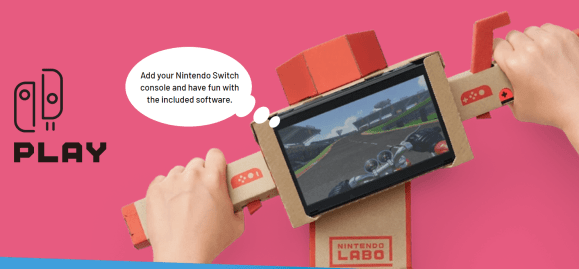
Some would say Nintendo’s video games killed the conventional kids’ toy market, but now they might be bringing it back.
When Nintendo told gamers it would reveal “a new way to play with the Nintendo Switch” on January 18 (Japan time), I naturally assumed the company was finally going to unveil its platform for digitally purchasing classic Nintendo games on the console. After all, the Switch already has an NES emulator buried in its internals.
But nope. The ever-innovative Nintendo pulled off something incredible in the modern era of loose lips and slow-drip teaser videos, and instead announced something completely unexpected with Nintendo Labo: a brand-new line of Switch peripherals made out of cardboard.
https://www.youtube.com/watch?v=P3Bd3HUMkyU
Seriously. The newest add-ons for Nintendo’s high-tech gaming gear are wildly imaginative controllers made of thick paper, string, rubber bands, and sponges, and you assemble them yourself, following tutorials displayed on your Switch screen.
▼ Nintendo calls the items “Toy-Cons,” a play on words with the Switch’s Joy-Con controllers.
Because of the Switch’s modular nature, the screen/processor and two controllers can all be docked in separate parts of the Toy-Con, which allows for a huge variety of designs. In addition to the 13-key piano (which is playable), some of the highlights from the announcement video include a motorcycle, fishing rod, robot suit/backpack (complete with head-mounted display), and even a remote controlled car that you control with the touchscreen and moves by utilizing the vibration functions of the Joy-Cons.
The Nintendo Labo’s retail debut is coming on April 20, with two sets being offered initially. The Variety Kit comes with enough materials to make two RC cars, the fishing rod, the house, the motorbike, and the piano.
The Robot Kit, meanwhile, is a stand-alone package specifically for those looking to build the robot suit.
If some of the designs look pretty complex, that’s partially the point, Nintendo is almost billing Nintendo Labo as an educational product, with a tagline of “Make. Play. Discover.” Nintendo is asserting that understanding how the Toy-Cons work is a major component of the fun, and the video even encourages users to dream up their own ways to use their cardboard creations.
Neat as the idea may be, Nintendo Labo sets aren’t going to be cheap. The Variety Kit has a suggested retail price of US$69.99 in North America, and the Robot Kit is even pricier at $79.99 (pricing in Japan is roughly the same). At those prices, you might be wondering what’s stopping people who’re goods at arts and crafts from reverse engineering the sets and sharing blueprints online, but at least part of Nintendo’s asking price is justified by the fact that Nintendo Labo kits come bundled with games designed to be played with the assembled Toy-Cons.
But there’s a bit of a potential problem there as well. There’s no arguing that Nintendo gets high marks for creativity for Nintendo Labo, but the company has shown that it can sometimes think a little too far outside the box. Consider the company’s Virtual Boy, which started with a novel idea (immersive 3-D graphics through a dedicated single-person monitor), but one that severely limited gameplay options and resulted in a limited library of shallow games.
Yes, some of the Toy-Cons shown in the video look like they’d make great substitutes for the buttons, thumbsticks, and D-pads of conventional video game experiences. But when the footage shows a Toy-Con that’s a house with a faucet on its side, used to play a game in which a bunch of jelly beans are bouncing around a living room, it’s all too easy to flash back to Nintendo’s gimmicky and underwhelming 1-2-Switch, which was released alongside the system and failed to parlay its motion controls into a sufficiently enjoyable party game.
▼ And if you can figure out a way to make a game with a bird-shaped controller that’s fun for more than five minutes, you’re a much more imaginative person than I am.
While Nintendo Labo is sure to attract adults as well, Nintendo seems to be heavily pushing it as something for kids (upcoming hands-on demonstrations in San Francisco and New York are exclusively for kids ages 6 to 12 and their parents), which is going to make the cost a definite issue. 70 dollars is a bit on the pricy side for a new video game release, and it’s definitely a lot for a cardboard toy, which might be what parents primarily see Nintendo Labo as. And if parents see it as an arts-and-craft project, that sticker shock is going to be all the more severe.
At the same time, there’s no denying the appeal of the novelty factor, which might get people to open their wallets for an unprecedented entertainment option, and it’s possible that Nintendo has found a deep and lasting consumer desire. And even if Nintendo Labo releases and up being few and/or far-between, the fact that Nintendo Labo also requires a Nintendo Switch seems like a subtle strategy to boost the system’s already impressive sales, and so even if Nintendo ends up not putting out a steady stream of Nintendo Labo sets for years to come, the allure of building Toy-Cons could put its hardware into more homes, and in turn boost the potential audience for its conventional video games.
Source: Nintendo
Featured image: YouTube/Nintendo
Top image: Nintendo
Insert Images: YouTube/Nintendo, Nintendo (1, 2, 3)
Follow Casey on Twitter, where he eagerly await the creation of a R.O.B. Toy-Con.

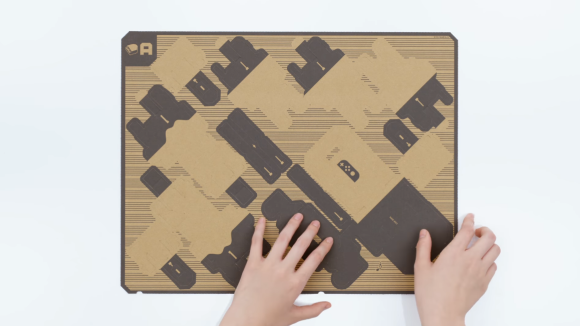
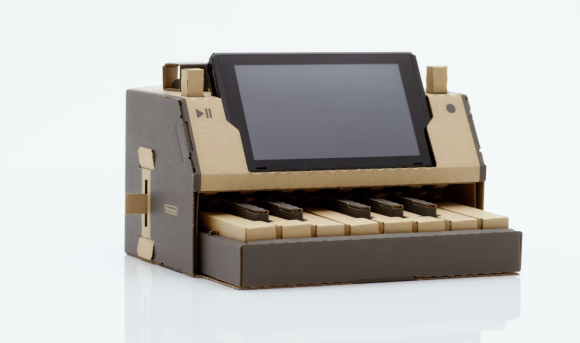
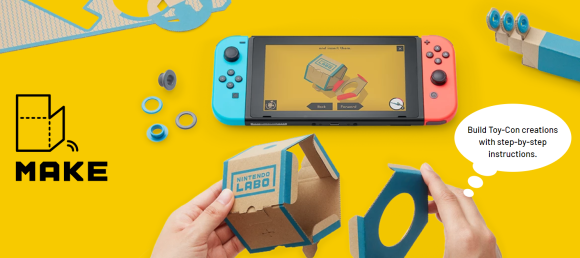
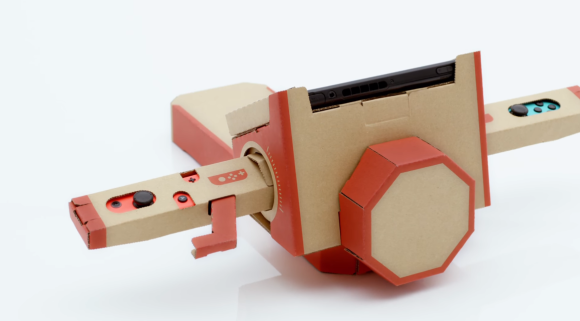


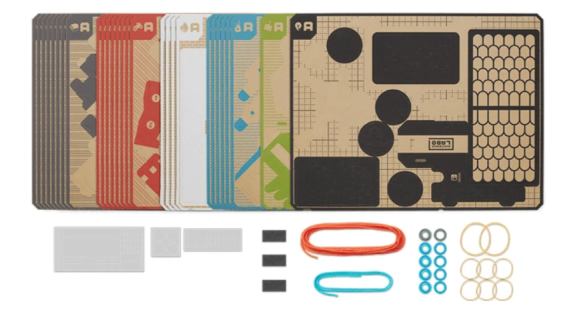
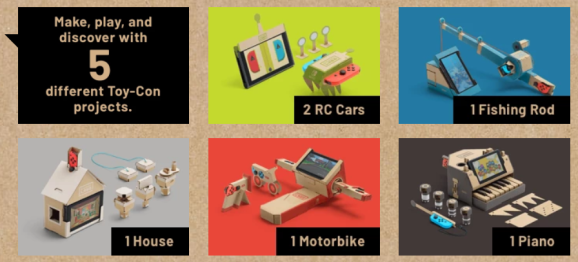
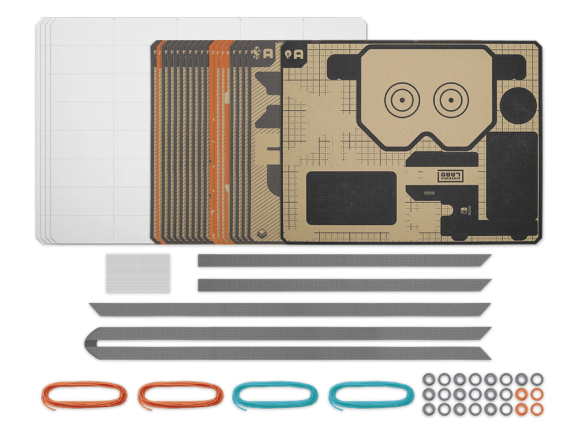
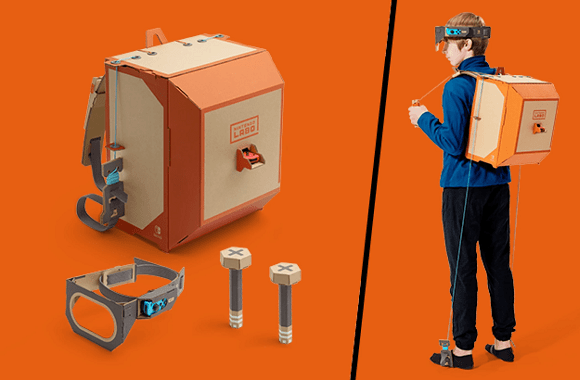
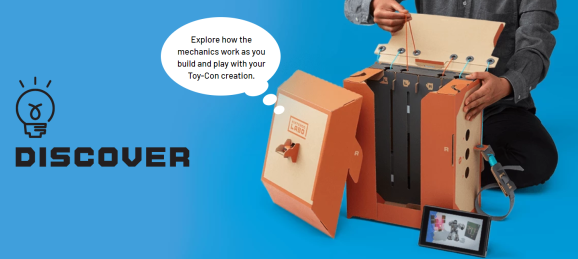
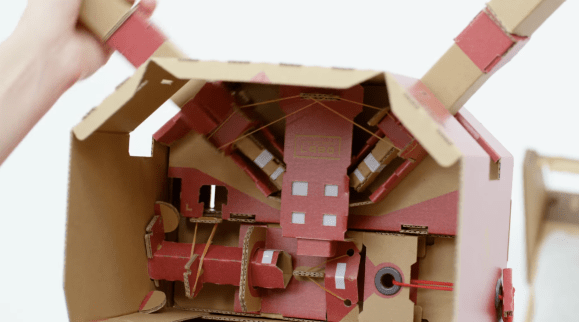
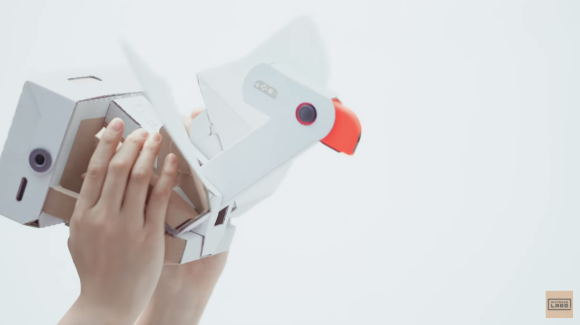
 Nintendo fans make amazing Luigi’s Mansion AR game by tinkering with Nintendo Labo【Video】
Nintendo fans make amazing Luigi’s Mansion AR game by tinkering with Nintendo Labo【Video】 Nintendo hid a secret message on the Switch’s Pro Controller
Nintendo hid a secret message on the Switch’s Pro Controller Nintendo to give Labo kits to U.S. elementary schools, but not Japanese schools. Why?
Nintendo to give Labo kits to U.S. elementary schools, but not Japanese schools. Why? VR Zelda: Breath of the Wild, Super Mario Odyssey modes coming, for free, from Nintendo
VR Zelda: Breath of the Wild, Super Mario Odyssey modes coming, for free, from Nintendo Switch 2 announced by Nintendo, wisely switches up very little【Video】
Switch 2 announced by Nintendo, wisely switches up very little【Video】 We revisited Sweets Paradise after a decade to see if Japan’s dessert buffet still delivers
We revisited Sweets Paradise after a decade to see if Japan’s dessert buffet still delivers Survey finds more than 70 percent of Japanese children have an online friend
Survey finds more than 70 percent of Japanese children have an online friend Japanese thug wear from Birth Japan perfect for those breaking bad next year
Japanese thug wear from Birth Japan perfect for those breaking bad next year Visiting Hokkaido’s adorable and awesome Asahikawa rice paddy art【Photos】
Visiting Hokkaido’s adorable and awesome Asahikawa rice paddy art【Photos】 Dragon Quest Burgers and Slime drinks are coming to McDonald’s Japan【Video】
Dragon Quest Burgers and Slime drinks are coming to McDonald’s Japan【Video】 Sanrio theme park in Japan announces plans to expand into a Sanrio resort
Sanrio theme park in Japan announces plans to expand into a Sanrio resort Starbucks Japan reveals this year’s lucky bag bundle, pre-order lottery opens tomorrow
Starbucks Japan reveals this year’s lucky bag bundle, pre-order lottery opens tomorrow Hayao Miyazaki says Happy New Year to Studio Ghibli fans with new art for Year of the Horse
Hayao Miyazaki says Happy New Year to Studio Ghibli fans with new art for Year of the Horse Mr. Sato accosts award-winning actor Hideaki Ito【Interview】
Mr. Sato accosts award-winning actor Hideaki Ito【Interview】 The Japanese dog cafe that isn’t technically a dog cafe
The Japanese dog cafe that isn’t technically a dog cafe Starbucks Japan ready to get Year of the Horse started with adorable drinkware and plushies【Pics】
Starbucks Japan ready to get Year of the Horse started with adorable drinkware and plushies【Pics】 Cyberpunk anime meets traditional culture in Ghost in the Shell gold leaf Japanese changing screens
Cyberpunk anime meets traditional culture in Ghost in the Shell gold leaf Japanese changing screens 7 great places to see Mt. Fuji from without having to climb it
7 great places to see Mt. Fuji from without having to climb it Hello Kitty Choco Egg figures are an adorable trip through three periods of Japanese pop culture【Pics】
Hello Kitty Choco Egg figures are an adorable trip through three periods of Japanese pop culture【Pics】 7-Eleven Japan’s ramen-cooking robot whipped us up a bowl of noodles【Taste test】
7-Eleven Japan’s ramen-cooking robot whipped us up a bowl of noodles【Taste test】 We found possibly the quietest Japanese-style hotel in Tokyo’s bustling Shinjuku district
We found possibly the quietest Japanese-style hotel in Tokyo’s bustling Shinjuku district Japan’s otoshidama tradition of giving kids money at New Year’s gets a social welfare upgrade
Japan’s otoshidama tradition of giving kids money at New Year’s gets a social welfare upgrade Sumo Sanrio! Hello Kitty and pals team up with Japan Sumo Association for new merch【Pics】
Sumo Sanrio! Hello Kitty and pals team up with Japan Sumo Association for new merch【Pics】 More Than a Capsule Stay: Why Solo Travelers Choose “global cabin Yokohama Chinatown”
More Than a Capsule Stay: Why Solo Travelers Choose “global cabin Yokohama Chinatown” Japan’s oldest largetooth sawfish in captivity back on display in Mie Prefecture
Japan’s oldest largetooth sawfish in captivity back on display in Mie Prefecture 7-Eleven Japan starts new temporary luggage storage service in over 300 branches
7-Eleven Japan starts new temporary luggage storage service in over 300 branches Disillusionment at Tsukiji’s tourist-target prices led us to a great ramen restaurant in Tokyo
Disillusionment at Tsukiji’s tourist-target prices led us to a great ramen restaurant in Tokyo Starbucks teams up with 166-year-old Kyoto doll maker for Year of the Horse decorations【Photos】
Starbucks teams up with 166-year-old Kyoto doll maker for Year of the Horse decorations【Photos】 Tokyo considering law requiring more trash cans following litter increase in heavily touristed area
Tokyo considering law requiring more trash cans following litter increase in heavily touristed area Tokyo’s Tsukiji sushi neighborhood asks tour groups to stay away for the rest of the month
Tokyo’s Tsukiji sushi neighborhood asks tour groups to stay away for the rest of the month Tokyo event lets you travel back in time, for free, to celebrate 100 years since Showa era start
Tokyo event lets you travel back in time, for free, to celebrate 100 years since Showa era start Japan may add Japanese language proficiency, lifestyle classes to permanent foreign resident requirements
Japan may add Japanese language proficiency, lifestyle classes to permanent foreign resident requirements Stamina-destroying “Paralysis Noodles” are Tokyo’s newest over-the-top ramen innovation
Stamina-destroying “Paralysis Noodles” are Tokyo’s newest over-the-top ramen innovation Survey asks foreign tourists what bothered them in Japan, more than half gave same answer
Survey asks foreign tourists what bothered them in Japan, more than half gave same answer Japan’s human washing machines will go on sale to general public, demos to be held in Tokyo
Japan’s human washing machines will go on sale to general public, demos to be held in Tokyo Japan’s deadliest food claims more victims, but why do people keep eating it for New Year’s?
Japan’s deadliest food claims more victims, but why do people keep eating it for New Year’s? We deeply regret going into this tunnel on our walk in the mountains of Japan
We deeply regret going into this tunnel on our walk in the mountains of Japan Studio Ghibli releases Kodama forest spirits from Princess Mononoke to light up your home
Studio Ghibli releases Kodama forest spirits from Princess Mononoke to light up your home Major Japanese hotel chain says reservations via overseas booking sites may not be valid
Major Japanese hotel chain says reservations via overseas booking sites may not be valid Put sesame oil in your coffee? Japanese maker says it’s the best way to start your day【Taste test】
Put sesame oil in your coffee? Japanese maker says it’s the best way to start your day【Taste test】 No more using real katana for tourism activities, Japan’s National Police Agency says
No more using real katana for tourism activities, Japan’s National Police Agency says Starbucks Japan reveals new sakura drinkware collection, inspired by evening cherry blossoms
Starbucks Japan reveals new sakura drinkware collection, inspired by evening cherry blossoms Updated cherry blossom forecast shows extra-long sakura season for Japan this year
Updated cherry blossom forecast shows extra-long sakura season for Japan this year Six-button Switch! Japanese gadget company turns Nintendo’s console into retro arcade controller
Six-button Switch! Japanese gadget company turns Nintendo’s console into retro arcade controller Japan’s pretty lifestyle brand made an ultra-cheap Switch controller, but is it any good?
Japan’s pretty lifestyle brand made an ultra-cheap Switch controller, but is it any good? Classic 16-bit Nintendo controllers get modern makeover for use with Switch, current-gen consoles
Classic 16-bit Nintendo controllers get modern makeover for use with Switch, current-gen consoles Nintendo Switch has hidden NES emulator, accessed with two tributes to the late President Iwata
Nintendo Switch has hidden NES emulator, accessed with two tributes to the late President Iwata Coronavirus outbreak delays Nintendo Switch Animal Crossing console production, orders
Coronavirus outbreak delays Nintendo Switch Animal Crossing console production, orders This gigantic faux Switch is exactly how we want to play Nintendo games【Photos】
This gigantic faux Switch is exactly how we want to play Nintendo games【Photos】 Switch 2 release date announced, Nintendo to sell both “Japan-only” and “multi-language” versions
Switch 2 release date announced, Nintendo to sell both “Japan-only” and “multi-language” versions Nintendo’s newest Switch game will teach you how to make games of your own【Video】
Nintendo’s newest Switch game will teach you how to make games of your own【Video】 Nintendo makes a huge crowd-pleasing announcement about the Switch successor
Nintendo makes a huge crowd-pleasing announcement about the Switch successor Hot-selling Nintendo Switch at core of heart-warming tale of cross-generational gamer generosity
Hot-selling Nintendo Switch at core of heart-warming tale of cross-generational gamer generosity Finally! Nintendo Japan expands Switch 8-bit controller sales to everybody, Online member or not
Finally! Nintendo Japan expands Switch 8-bit controller sales to everybody, Online member or not Nintendo’s crazy new Ring-Con and RingFit Adventure are its new exercise/gaming hybrid【Video】
Nintendo’s crazy new Ring-Con and RingFit Adventure are its new exercise/gaming hybrid【Video】 Mario Paint arrives for Nintendo Switch Online, finally can reach its potential after 34 years
Mario Paint arrives for Nintendo Switch Online, finally can reach its potential after 34 years Nintendo FINALLY adds 16-bit Super NES/Super Famicom games to Switch Online service!
Nintendo FINALLY adds 16-bit Super NES/Super Famicom games to Switch Online service!
Leave a Reply